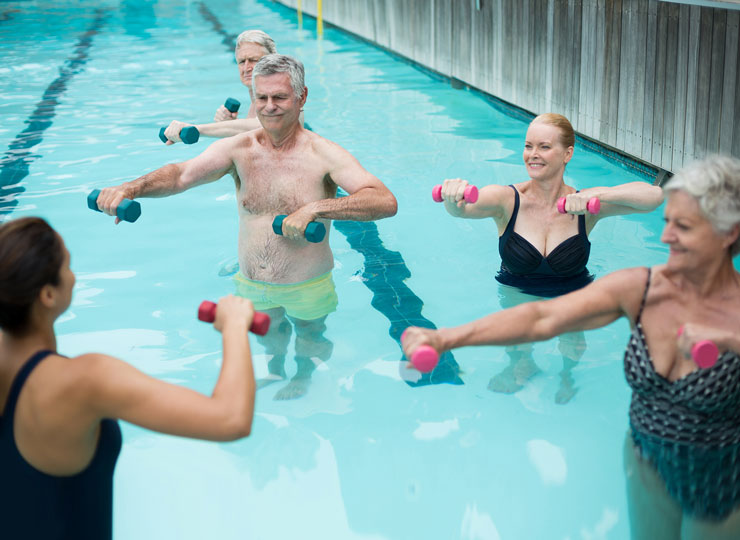
March 30, 2020
Older women and women who regularly engaged in physical activities like walking, gardening, swimming or dancing appeared to have larger brains than their sedentary peers, according to a new report. The protective effects of physical activity were equivalent to about four years of normal aging.
The brain typically shrinks with age, and brain shrinkage is particularly prominent in people with Alzheimer’s disease. Larger brain volume has been tied to a lower risk of Alzheimer’s disease.
“These results suggest that people may potentially prevent brain shrinking and the effects of aging on the brain simply by becoming more active,” said study author Yian Gu, of Columbia University in New York. “Recent studies have shown that as people age, physical activity may reduce the risk of cognitive decline and dementia.”
One known effect of physical activity that could explain those results is the increase in size of the hippocampus, a brain region important for memory formation.
For the study, Dr. Gu and colleagues looked at 1,557 men and women whose average age was 75. None had Alzheimer’s disease or other forms of dementia. However, 296 had mild cognitive impairment, a condition that involves cognitive losses and linked to memory deficits that often progresses to full-blown dementia. About one in four subjects carried the APOE-E4 allele, two copies of which is linked to a greater likelihood of developing Alzheimer’s disease.
Study participants had medical exams and tests of memory and thinking skills to look for signs of dementia. They also underwent brain scans using magnetic resonance imaging, or MRI, which can detect brain shrinkage and other abnormalities. In addition, they filled out detailed questionnaires about the kinds of physical activities they engaged in, and how often.
The researchers divided them into three groups, according to their exercise habits, ranging from very active, moderately inactive, or generally inactive.

The most active group, on average, engaged in at least seven hours a week of low-intensity physical activity, four hours a week of moderate activity, or two hours of high-intensity exercise. Examples of low-intensity activities include a casual walk or a stretch session, or everyday activities like bringing in the groceries, shopping or doing light housework. Moderate activities include workouts, such as walking briskly or walking uphill, taking a yoga class, weight training or aerobic activities like jogging, cycling or swimming laps. High-intensity workouts might involve sprinting, taking a spin class or a boot camp style exercise class – activities that get your breathing and heart rate up.
The moderately active group engaged in about two-and-a-half hours of low-intensity activities, one-and-a-half hours of moderate physical activity or an hour of high-intensity exercise each week. The inactive group got little or no exercise, on average.
The researchers compared the MRI brain scans of the study participants and found that the most active group had brain volumes that were, on average, about 1.4 percent larger than those of the inactive group, equivalent to about four years of normal brain aging. They controlled for factors like age, sex, education, the presence of the APOE-E4 allele and mild cognitive impairment, and the association persisted.
“Our study found that those who engaged in the top third highest level of physical activity had a brain volume the equivalent of four years younger in brain aging than people who were at the bottom third activity level,” Dr. Gu said.
The study showed only an association and could not prove cause and effect. Still, Dr. Gu said, “Our results add to the evidence that more physical activity is linked to larger brain volume in older people and builds on evidence that moving your body more often may protect against loss of brain volume.”
Other research has shown that whether older people dance, swim, walk jog, or garden, physical activity helps to preserve parts of the brain critical for memory and thinking, compared to their sedentary peers. Activities like walking may also help to delay declines in thinking in those who are already in the early stages of Alzheimer’s disease, research shows.
Current treatments for Alzheimer’s disease are limited in their effectiveness. So any approach that may help to prevent or slow the onset of dementia is crucial to keeping the brain healthy with age.
By ALZinfo.org, The Alzheimer’s Information Site. Reviewed by Marc Flajolet, Ph.D., Fisher Center for Alzheimer’s Research Foundation at The Rockefeller University.
Source: American Academy of Neurology, presentation scheduled for the 72nd American Academy of Neurology’s Annual Meeting in Toronto.











